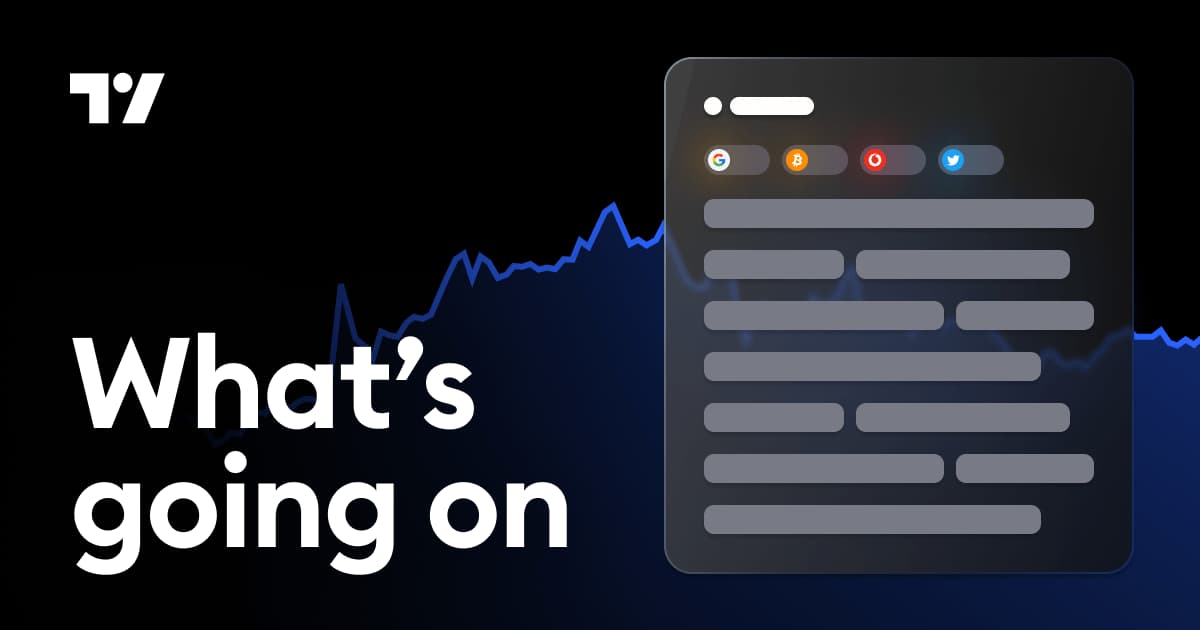The Bitcoin halving is a pivotal event in the cryptocurrency space that occurs approximately every four years, reducing the reward miners receive for validating transactions on the Bitcoin network. As the name suggests, a Bitcoin halving event cuts the rewards in half for miners who mine Bitcoin blocks that add transactions to the Bitcoin ledger. The process is hard-coded into the Bitcoin protocol to control its supply and maintain its scarcity and limited supply status.
The Bitcoin halving is crucial for traders because of its direct impact on Bitcoin BTCUSD, its market offering and consequently the price dynamics in the broader cryptocurrency market. This article examines Bitcoin trading strategies during the halving, cryptocurrency market dynamics, price trends, trading signals and opportunities, and overall investor behavior during the Bitcoin halving periods.
What is the Bitcoin Halving?
Bitcoin operates on a decentralized network of computers known as nodes. Bitcoin mining is the process of creating valid blocks that add transaction records to Bitcoin’s public, decentralized ledger. Miners are individuals or entities that play a crucial role in securing and validating transactions on the Bitcoin blockchain. In return for their efforts, miners are rewarded with newly created Bitcoin.
Bitcoin mining uses hardware to solve complex mathematical problems, validating and securing transactions on the network. Miners use computing power and compete to solve these puzzles, and the first one to solve them gets a new block of transactions on the blockchain.
The Bitcoin halving refers to the reduction in the reward given to miners for solving complex mathematical problems and validating transactions on the Bitcoin blockchain. This is a mechanism built into the Bitcoin protocol by Satoshi Nakamoto, the creator of Bitcoin, and it occurs approximately every four years (or every 210,000 blocks).
During this event, miner rewards for successfully adding a new block to the blockchain are cut in half. For the broader crypto market, halvings reduce the supply of new Bitcoin entering the market.
Initially, miners received 50 Bitcoin as a reward for each block they added to the blockchain when Bitcoin was first introduced. At the first halving, the reward dropped to 25 Bitcoin, and subsequent halvings in 2016 and 2020 lowered the reward to 12.5 and 6.25 BTC, respectively. In April 2024, it will drop to 3,125 BTC, and the process will continue until all 21 million Bitcoins have been mined.

Reducing mining rewards controls the issuance of new Bitcoin and mimics the scarcity properties of precious metals such as gold. Bitcoin’s supply is limited to 21 million, and by making it progressively more difficult and resource-intensive to mine new BTC, the issuance rate slows, creating scarcity and potentially increasing the value of each Bitcoin.
Related: Bitcoin Halving 2024: Everything You Need to Know
The 2024 Bitcoin Halving
Although the timing of the next halving is uncertain because the Bitcoin algorithm controls the occurrence of halving events based on the creation of blocks, experts have pointed to a likely date in April 2024, which closely matches the historical four-year cycle.
The final halving is expected to occur in the year 2140, when the number of BTC in circulation will reach its maximum supply of 21 million. At this point, no more new Bitcoin will be mined.
The Bitcoin halving is designed to be somewhat predictable to avoid causing significant disruptions to the network. Despite this, the lead up to and aftermath of a halving often sees increased volatility in the price of Bitcoin.
What is the historical impact of the Bitcoin halving on BTC price trends?
The price trends from historical data and fundamental analysis show that Bitcoin halvings tend to favorably affect the price of Bitcoin. The halving events usually instill optimism and a bullish trend in the cryptocurrency markets, which translates into positive price movements.
The positive momentum can be attributed to several factors, mainly economic demand-supply dynamics. The decrease in Bitcoin’s supply issue makes it scarcer, increasing demand and increasing its value.
In addition, the halving event draws attention to the cryptocurrency space, changes investor behavior, attracts new investors and promotes fear of missing out (FOMO), brings price predictions by influential commentators on social media and established media and higher community engagement, often contributing to a increase in trading activity.
The period leading up to a halving often initiates conversations and educational campaigns about the fundamentals of Bitcoin, blockchain technology, and the economics of cryptocurrencies.
However, although historical trends indicate a correlation between halving events and price increases, this is not guaranteed, and investors should do their own research to understand the price trends during each halving.

Consistent trends have become evident in price analysis during each Bitcoin halving. In 2016, the value of BTC stood at $665 before halving, rising to $2,250 a year later.
The halving in 2020 took place in May when Bitcoin was priced at $8,740. By the end of the same year, BTC had risen to $29,000. Therefore, since a bullish market trend has typically followed each previous Bitcoin halving cycle, predictions suggest that the 2024 cycle will be no different.
Market Volatility and Trading Opportunities During the Bitcoin Halving
The anticipation and occurrence of a Bitcoin halving event is often accompanied by increased market volatility. This historical volatility creates both challenges and opportunities for traders. While the uncertainty can bring risks, it also opens up avenues for strategic trading, especially for those adept at navigating price swings.
Traders can follow the prevailing trend in the lead up to and after the halving, either going long in a bullish trend or short in a bearish trend. Traders can identify key resistance or support levels to execute trades when the price breaks out of these levels.
Breakouts can help indicate potential trend reversals or the continuation of an existing trend. Support levels are price levels where the Bitcoin price can stop falling, and resistance levels are where it tends to stop its upward movement.
Traders can identify these levels by using technical analysis tools such as trend lines, moving averages or horizontal support and resistance lines, and wait for the price to break decisively above a resistance level or below a support level. The breakout is confirmed when the price closes above or below the identified level, indicating a possible shift in market sentiment.
For example, in 2016, before the halving, Bitcoin’s price was trading at around $665. Traders observing a resistance level at $700 may have adopted a breakout strategy, and if the price decisively broke above $700, it could signal a bullish breakout.
Once the breakout is confirmed, traders can enter a long position (buy) if it is a bullish breakout or a short position (sell) if it is a bearish breakout. Stop-loss orders and take-profit levels are typically set to manage risk and ensure profits.
Traders should continue to monitor the trade and adjust their strategy as the market develops. Breakout trades aim to capture the momentum generated by the price breaking through a significant level.
Breakout trading involves risks, and false breakouts can occur. Therefore, traders should be careful and do their research to filter out potential fake breakouts.
Additionally, traders can explore price differences across various crypto exchanges. Bitcoin’s volatility can create temporary price imbalances, and traders can capitalize on these arbitrage opportunities by buying on one exchange and selling on another.
Related: Bitcoin Halves 2024 – Miners Predict Potential Outcomes of Reduced BTC Rewards
Risk Assessment During the Bitcoin Halving
Although the Bitcoin halving is widely viewed as a positive event, there are inherent risks, especially in the short term. The period leading up to the halving often causes speculative market behavior, introducing the potential for increased volatility.
Additionally, it is crucial to recognize the possibility of a bear trend or temporary price corrections if market expectations are out of line with actual outcomes. Furthermore, traders must ensure that their cryptocurrency holdings are stored securely. Consider using a hardware wallet or a secure software wallet and enable two-factor authentication for extra security.
Market sentiment, regulatory developments and global economic factors may contribute to the overall risk landscape related to the Bitcoin halving, highlighting the importance of a well-informed and adaptive approach to investment strategies.
This article does not contain investment advice or recommendations. Every investment and trading move involves risk, and readers should do their own research when making a decision.
Disclaimer for Uncirculars, with a Touch of Personality:
While we love diving into the exciting world of crypto here at Uncirculars, remember that this post, and all our content, is purely for your information and exploration. Think of it as your crypto compass, pointing you in the right direction to do your own research and make informed decisions.
No legal, tax, investment, or financial advice should be inferred from these pixels. We’re not fortune tellers or stockbrokers, just passionate crypto enthusiasts sharing our knowledge.
And just like that rollercoaster ride in your favorite DeFi protocol, past performance isn’t a guarantee of future thrills. The value of crypto assets can be as unpredictable as a moon landing, so buckle up and do your due diligence before taking the plunge.
Ultimately, any crypto adventure you embark on is yours alone. We’re just happy to be your crypto companion, cheering you on from the sidelines (and maybe sharing some snacks along the way). So research, explore, and remember, with a little knowledge and a lot of curiosity, you can navigate the crypto cosmos like a pro!
UnCirculars – Cutting through the noise, delivering unbiased crypto news















